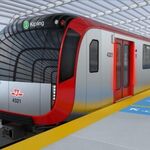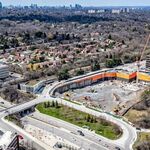nfitz
Superstar
Please yes!Please no.
Seriously, Toronto is at least double that of Brussels in population.
All current subways should stay subways.
Crosstown should have been a subway.
DRL should be a subway.
SRT should have been expanded, or built as a subway.
With a finite of tax dollars available, it sshould go to projects that will move the most people as efficiently as possible.
What moves the most people on Sheppard, for the most efficient use of dollars, is LRT. If they converted the existing tunnel to vehicles that would allow the line to be extended, travel times would remain the same between Don Mills and Yonge. In Scarborough, for the $4.5 billion that is being proposed to extend the subway 3 stations, you could instead build a 50-station LRT network and have $1 billion left over - with higher projected ridership.
The King streetcar carries more riders than Line 3 and Line 4 combined!





